Best air-purifying indoor plants — 10 brilliant options to improve air quality in the home
We've rounded up a list of the best air-purifying houseplants for a fresher home

Sophie King

Houseplants offer a host of benefits, but selecting the best air-purifying indoor plants will pave the way to a fresher home.
If you're wondering how to improve air quality at home, there's a long list of indoor plants to choose from. Not only can houseplants reduce stress, but they can remove toxins from the air, too.
‘Houseplants enhance indoor air quality by filtering pollutants and increasing humidity, creating a healthier living environment,’ says Andy Little, plant buyer at British Garden Centres. ‘Google searches for ‘air purifying plants’ and ‘aloe vera’ have been up year on year as they tap into the wellness trend that so many of us crave.’
If you're looking to expand your collection, we've rounded up the best air-purifying houseplants to add to your shopping list.
Best air-purifying indoor plants
By adding the best air-purifying indoor plants to your collection, you can, quite literally, breathe easy knowing that they’re both practical and naturally beautiful.
'Although not a substitution for proper ventilation and other air quality measures, particular houseplants can remove pollutants from the air and increase oxygen within a space,' says Monique Kemperman, houseplant expert from The Joy of Plants.
To help you decide which plants to go for, we’ve put together a list of the 10 best air-purifying houseplants you can buy.
Sign up to our newsletter for style inspiration, real homes, project and garden advice and shopping know-how

As PR lead at the Flower Council of Holland, Monique Kemperman possesses an in-depth understanding of the floral industry, which she’s honed over the past 30 years in the sector. Everything from exotic houseplants to the art of floral design continues to fuel her passion and dedication to promoting the benefits of plants and cut flowers to consumers across the globe.
1. Areca palm
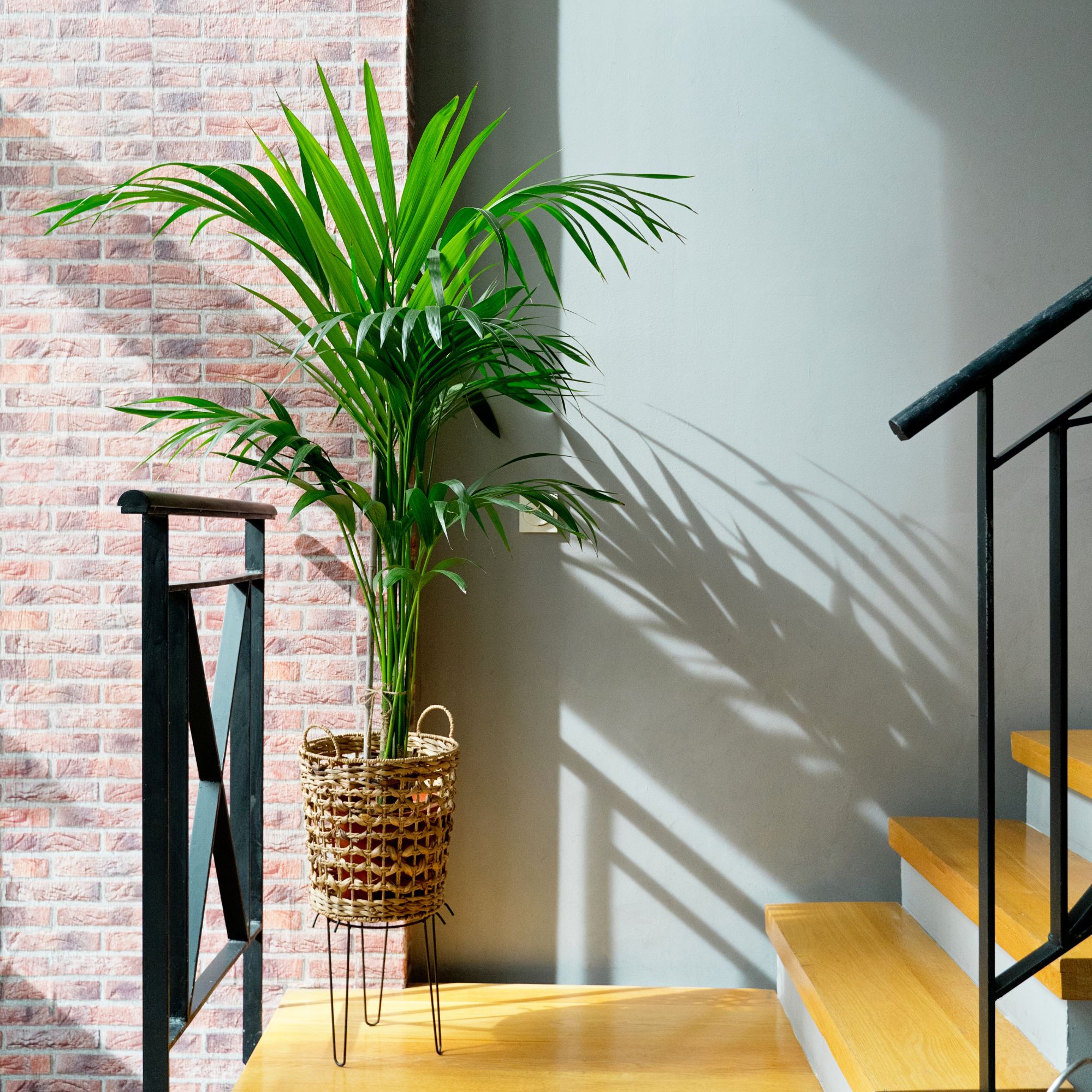
We're kicking off our list of the best air-purifying indoor plants with the areca palm, which also happens to be one of the best plants for reducing condensation and damp.
'Often considered the best air-purifying plant, the areca palm helps to reduce harmful substances and increases the amount of oxygen in a room,' says Monique.
'By effectively removing harmful toxins from the air, areca palms contribute to a healthier living environment and release moisture back into the air.'
Where to buy an areca palm:
- Gardening Express: Buy an areca palm to give your home an air-purifying boost.
- Yimbly: If you're looking for a larger plant, this areca palm is over one metre tall.
2. Swiss cheese plant
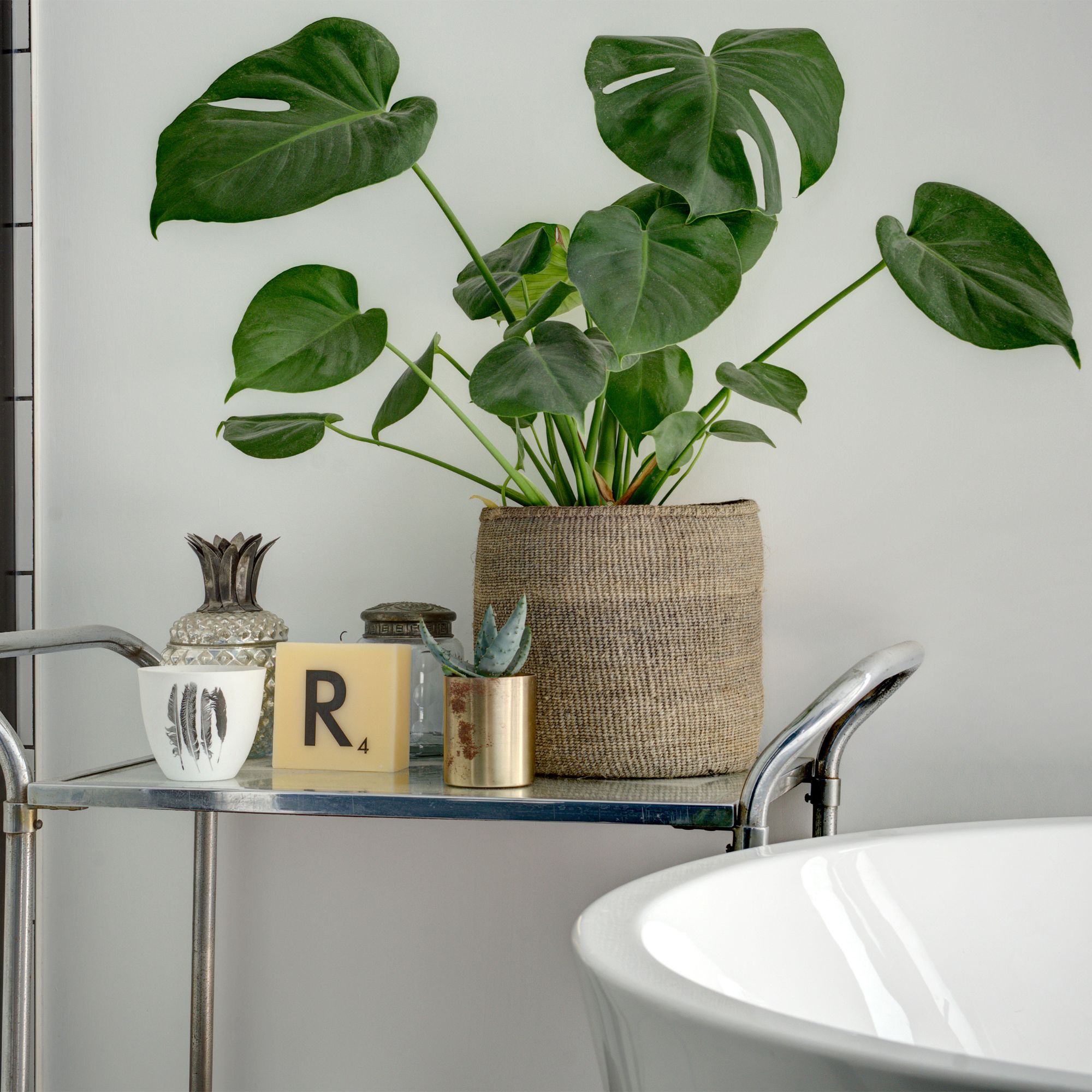
The Swiss cheese plant, or Monstera, is another brilliant choice if you're on the hunt for the best air-purifying houseplants. Once you know how to care for a Monstera deliciosa properly, your plant should remain a strong statement piece for years to come.
'With its iconic split leaves, the Monstera is not just a stylish statement plant, but a brilliant air purifier, too,' says Monique. 'Its large, lush foliage adds a tropical vibe while improving air quality, making it an ideal plant for homes or offices seeking both beauty and function.'
Keep it in a bright spot, away from direct sunlight, and make sure you're using the best soil for a Monstera plant.
Where to buy a Swiss cheese plant:
- Crocus: This Swiss cheese plant makes a fantastic centrepiece.
- M&S: A medium-sized Monstera in a white ceramic pot.
3. Snake plant
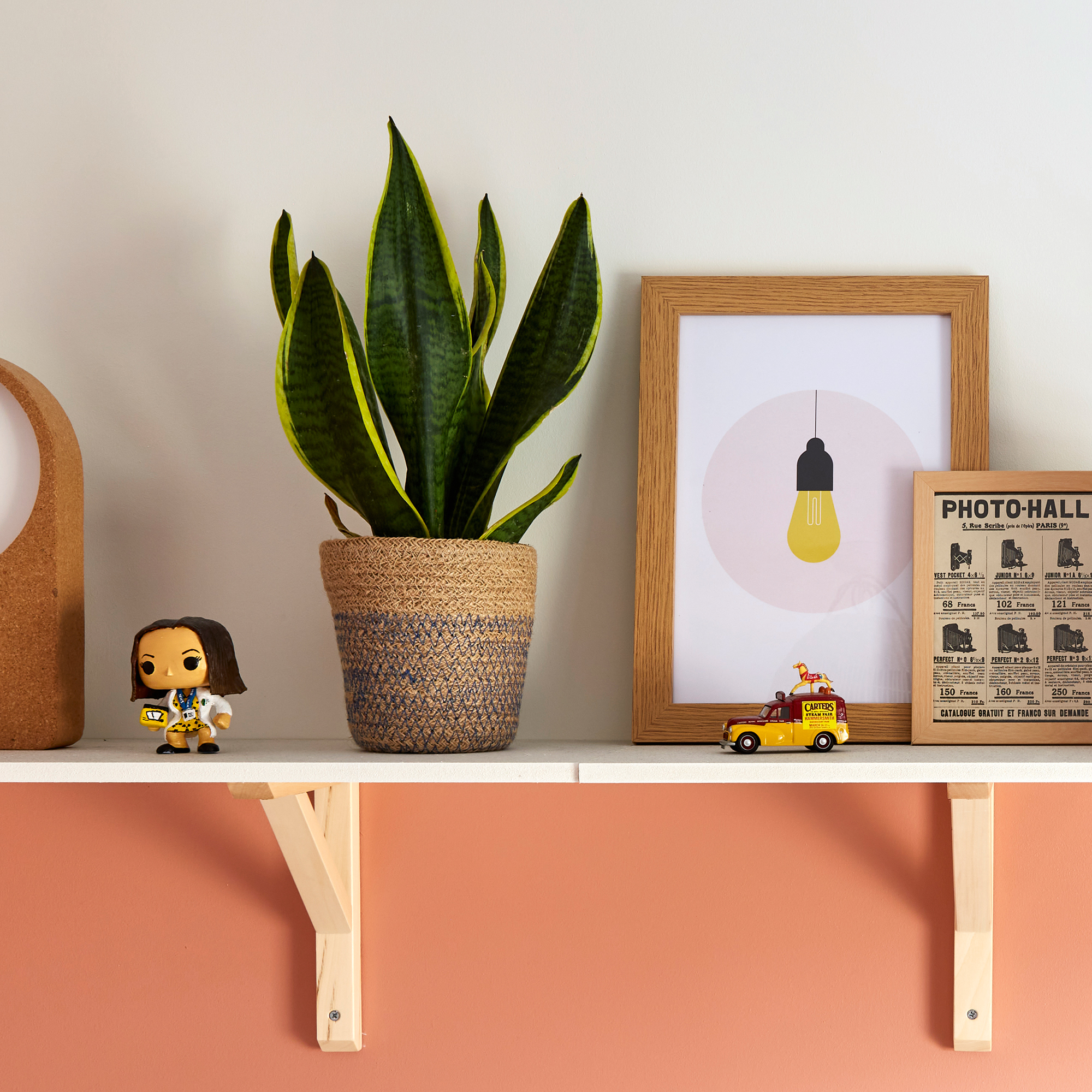
If you’re a houseplant novice and looking for an unkillable air-purifying indoor plant, look no further than the snake plant. Caring for a snake plant is incredibly easy, and its unusual snake-like leaves make it a stylish addition to any home.
‘Snake plants are hardy, low-maintenance houseplants that can tolerate occasional neglect,’ says Jo Lambell, founder of Beards & Daisies. ‘NASA highlights them as one of the best plants for air purifying, removing toxins like formaldehyde, ammonia, and carbon monoxide.’
Jo also explained that snake plants are believed to bring protective energy and good fortune in feng shui. Plus, learning how to propagate a snake plant is simple, which means you can expand your collection of air-purifying plants for free.
Where to buy a snake plant:
- Beards & Daisies: Add a snake plant to your houseplant collection.
- Gardening Express: Go for the unique silvery leaves of Sansevieria 'Moonshine'.
4. Asplenium 'Crispy Wave'
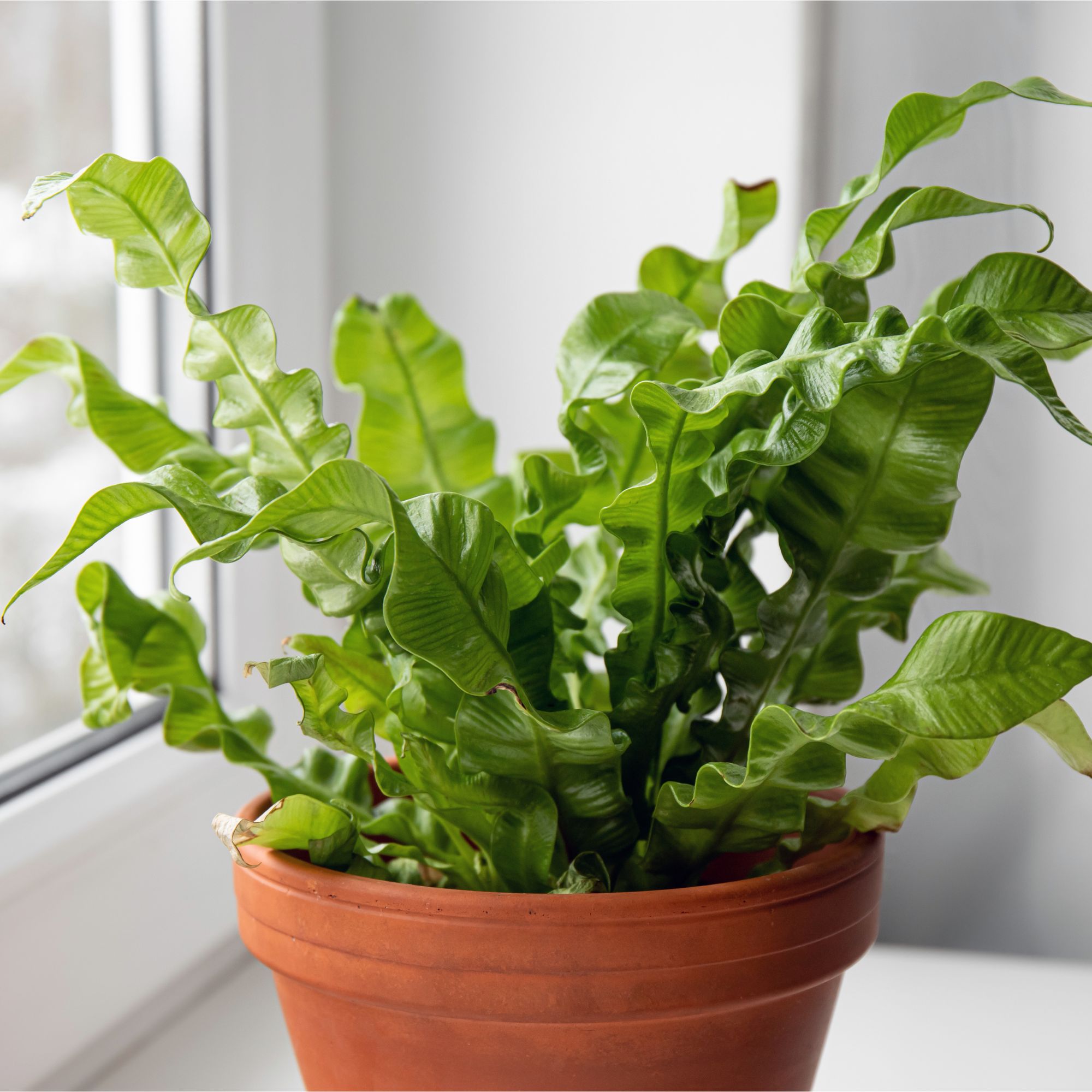
Asplenium 'Crispy Wave' is a type of fern (also called bird's nest fern) that experts consider to be one of the very best air-purifying indoor plants.
'The Asplenium 'Crispy Wave' is a fantastic air-purifying plant, renowned for its unique, curly fronds and impressive ability to filter indoor air,' says Monique.
For the best results, you'll need to choose the right spot for your plant.
'This fern thrives in indirect light and adds a touch of texture to any space while removing harmful toxins and pollutants,' Monique says.
Where to buy Asplenium 'Crispy Wave':
- Crocus: This Asplenium nidus 'Crispy Wave' plant can be purchased with or without a ceramic pot.
- Amazon: Another Asplenium nidus 'Crispy Wave' plant to add to your collection.
5. Peace lily
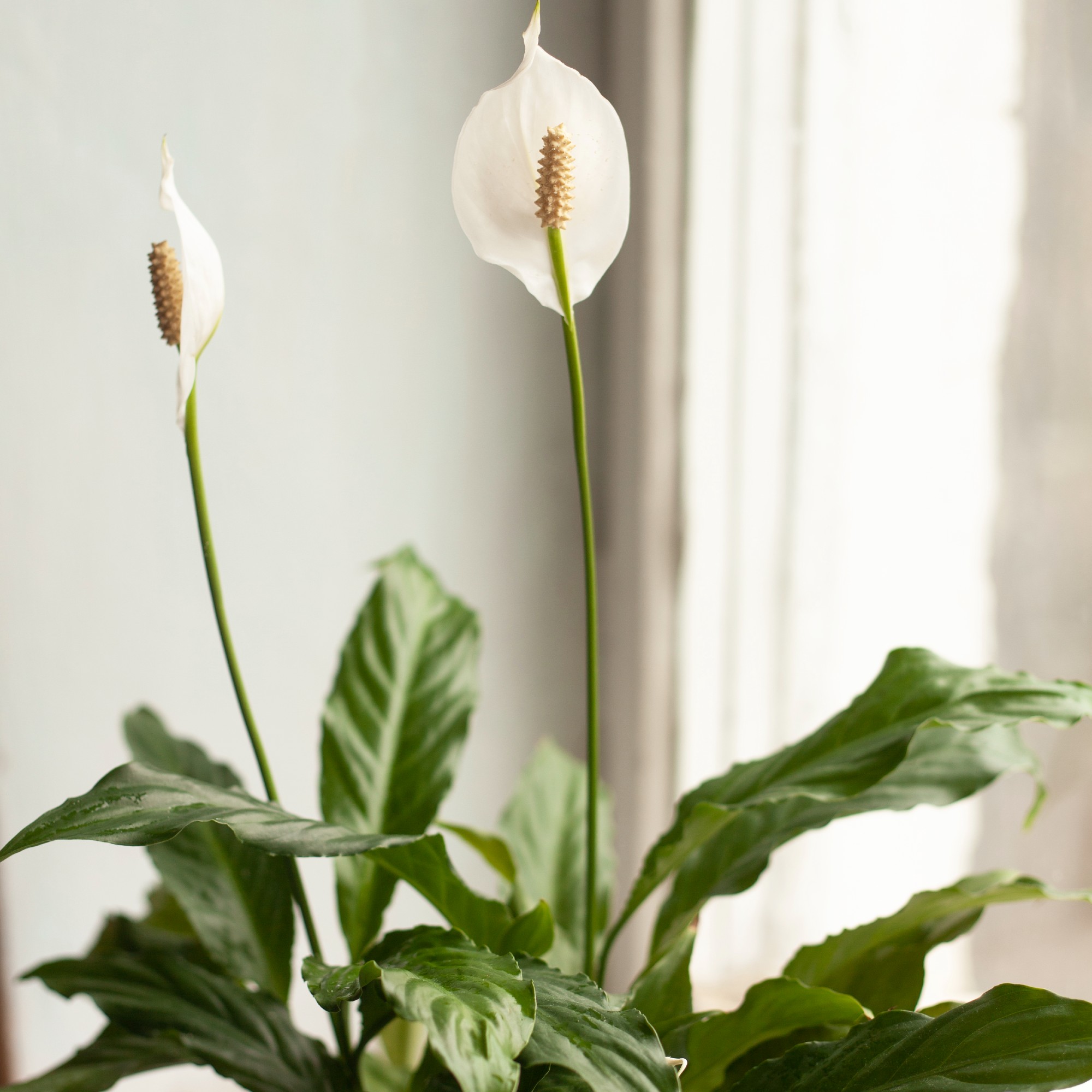
With glossy green leaves and long-lasting white flowers, peace lilies are a stunning addition to any home. While it’s fairly easy to care for a peace lily, they do have some maintenance requirements.
Not only do you have to dust your peace lily, but you also need to ensure that they’re kept out of direct sunlight and sheltered from draughts. Doing so will allow you to reap the rewards of this air-purifying indoor plant.
‘Peace lilies are highly regarded for their air-purifying qualities and potential to promote restful sleep, making them a favourite among those seeking a touch of tranquillity in their homes,’ says Andy from British Garden Centres.
Where to buy a peace lily:
- Gardening Express: Add a peace lily to your basket.
- Dunelm: This beautiful potted peace lily comes with a plant mister.
6. Calatheas
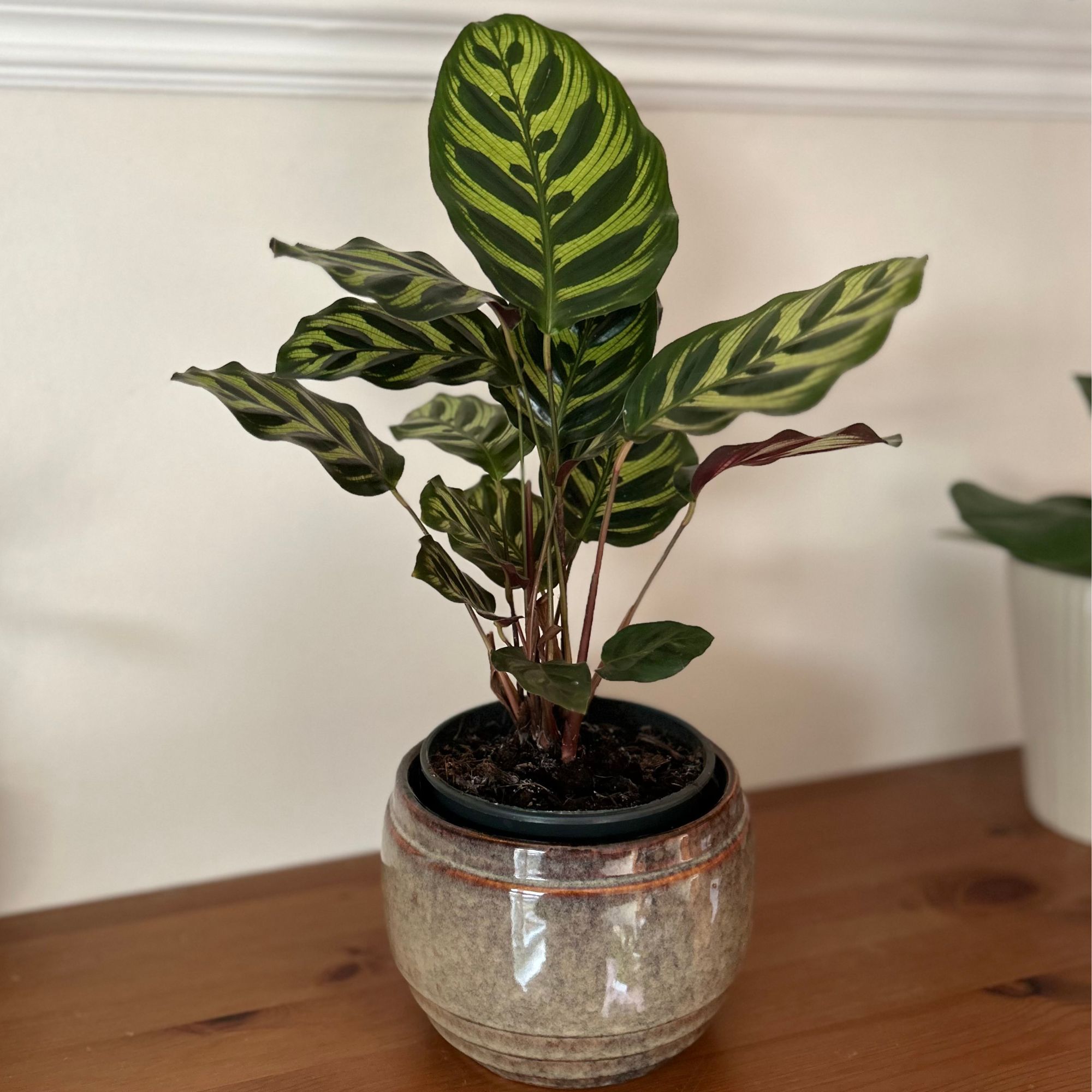
Calatheas, also known as prayer plants, are one of Ideal Home's gardens editor's favourite houseplants. They come in a range of varieties, from the peacock plant to the leopard plant, and they also happen to be one of the best air-purifying houseplants.
‘Calatheas continue to be favourites and are renowned for their ability to significantly improve indoor air quality by removing toxins,’ says Andy.
Where to buy a calathea:
- Gardening Express: A beautiful Calathea makoyana plant for your collection.
- Bloom & Wild: The Peacock Calathea comes in a seagrass basket.
7. Spider plant
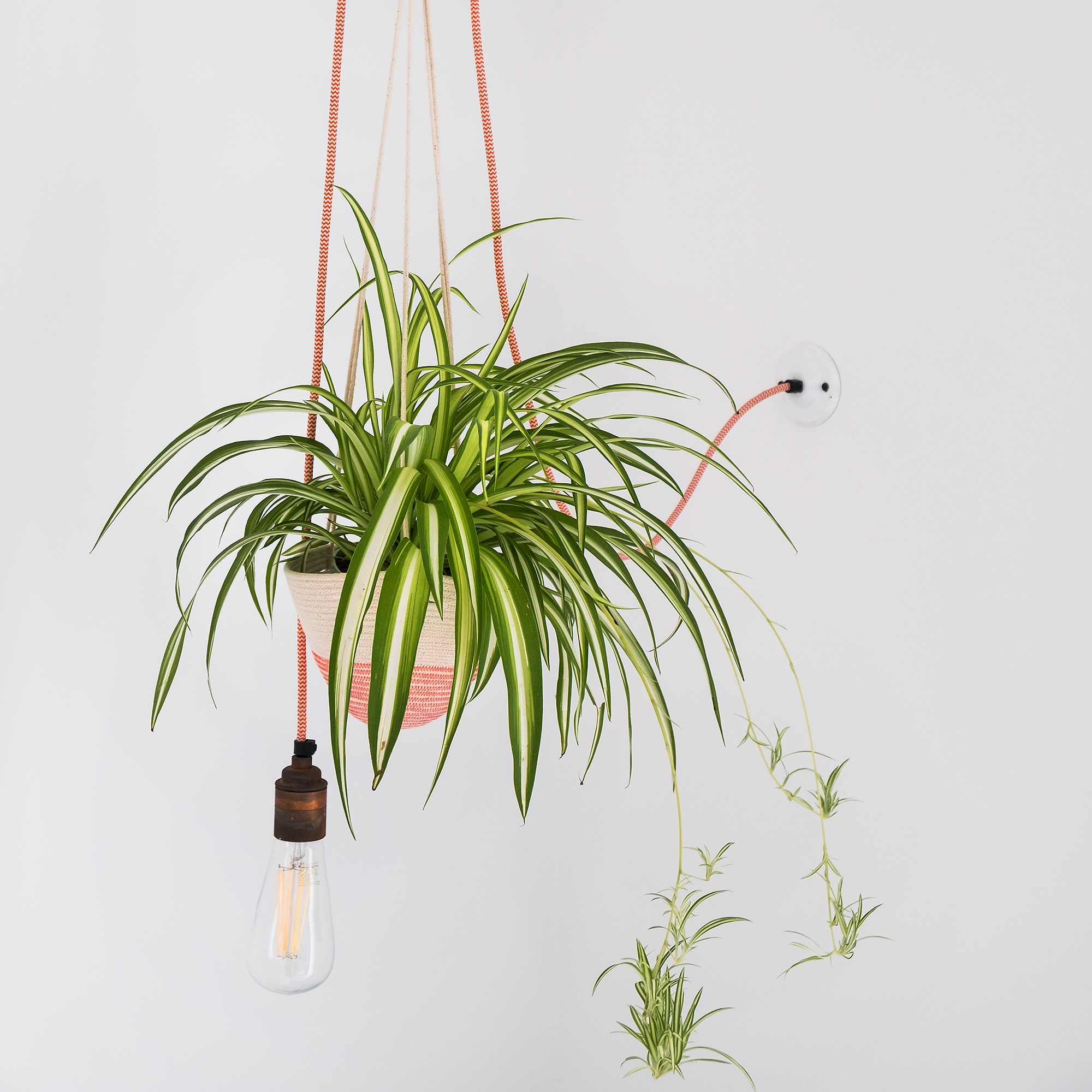
Unkillable houseplants don’t come cooler than the spider plant. With their spindly leaves and plantlets (often called spiderettes, babies or pups), these plants are incredibly quirky — but that’s not all they have to offer.
Spider plants can also successfully remove xylene, formaldehyde and carbon monoxide from the air, and they’re completely safe for pets.
Caring for spider plants is easy — as long as they have some form of light (even if it's artificial) and are watered on a semi-regular basis, they should thrive for years on end.
Where to buy a spider plant:
- Amazon: Add a variegated spider plant to your houseplant collection.
- Plants For All Seasons: Another great place to buy a spider plant.
8. Aloe vera
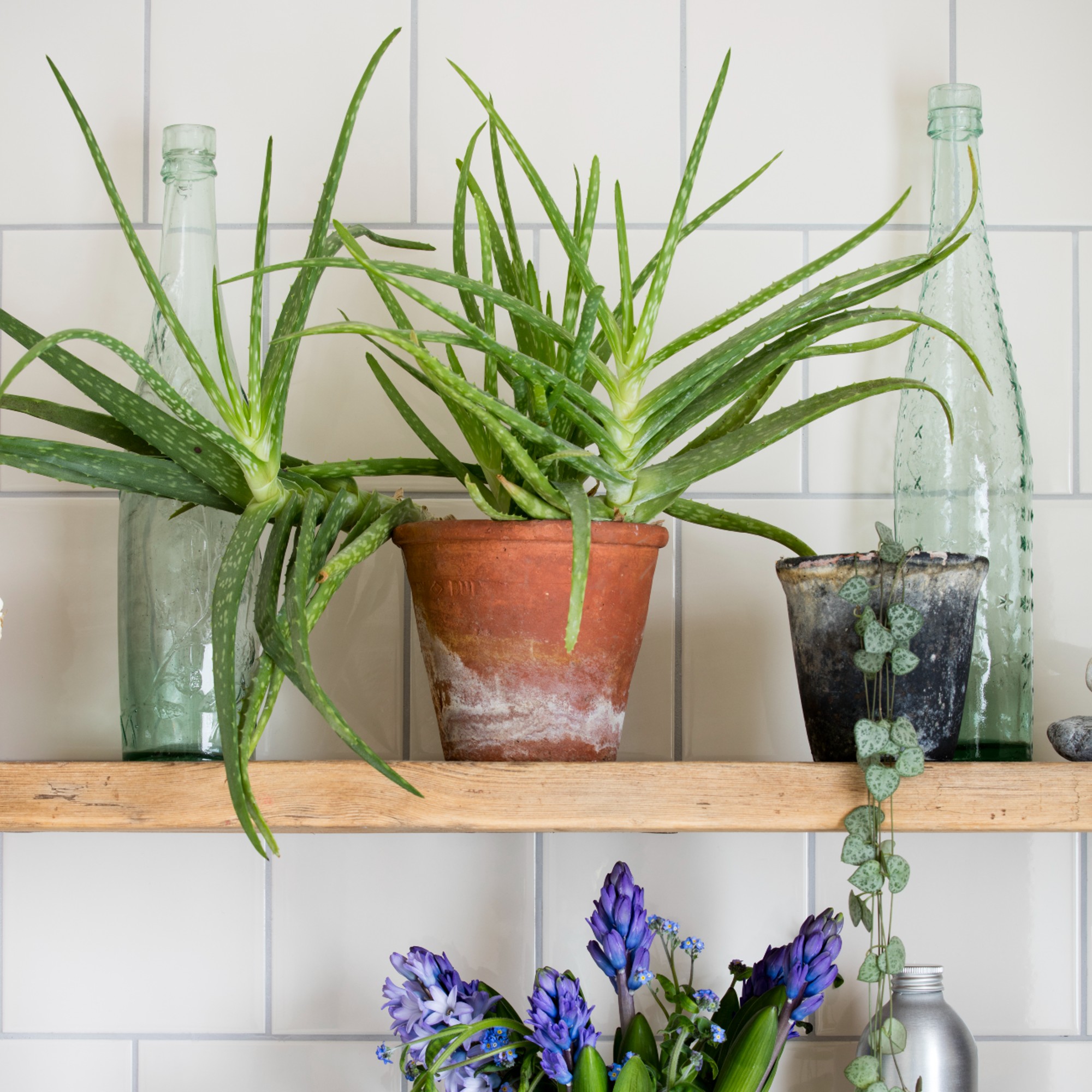
Aloe vera is a definite all-rounder in the indoor plant game. You can even extract the gel to treat burns or use it as a beauty product.
As if that wasn’t enough, it’s also one of the best air-purifying indoor plants to remove toxins from the air, including formaldehyde and benzene, which can be found in many chemical cleaners and detergents.
Thankfully, caring for aloe vera is easy, and so is learning how to propagate aloe vera. It thrives best in a sunny spot, so you might want to make some space on your windowsill for this one.
Where to buy an aloe vera plant:
- Amazon: Buy a medicinal aloe vera plant.
- Crocus: Choose from a range of potted aloe vera plants.
9. Rubber plant
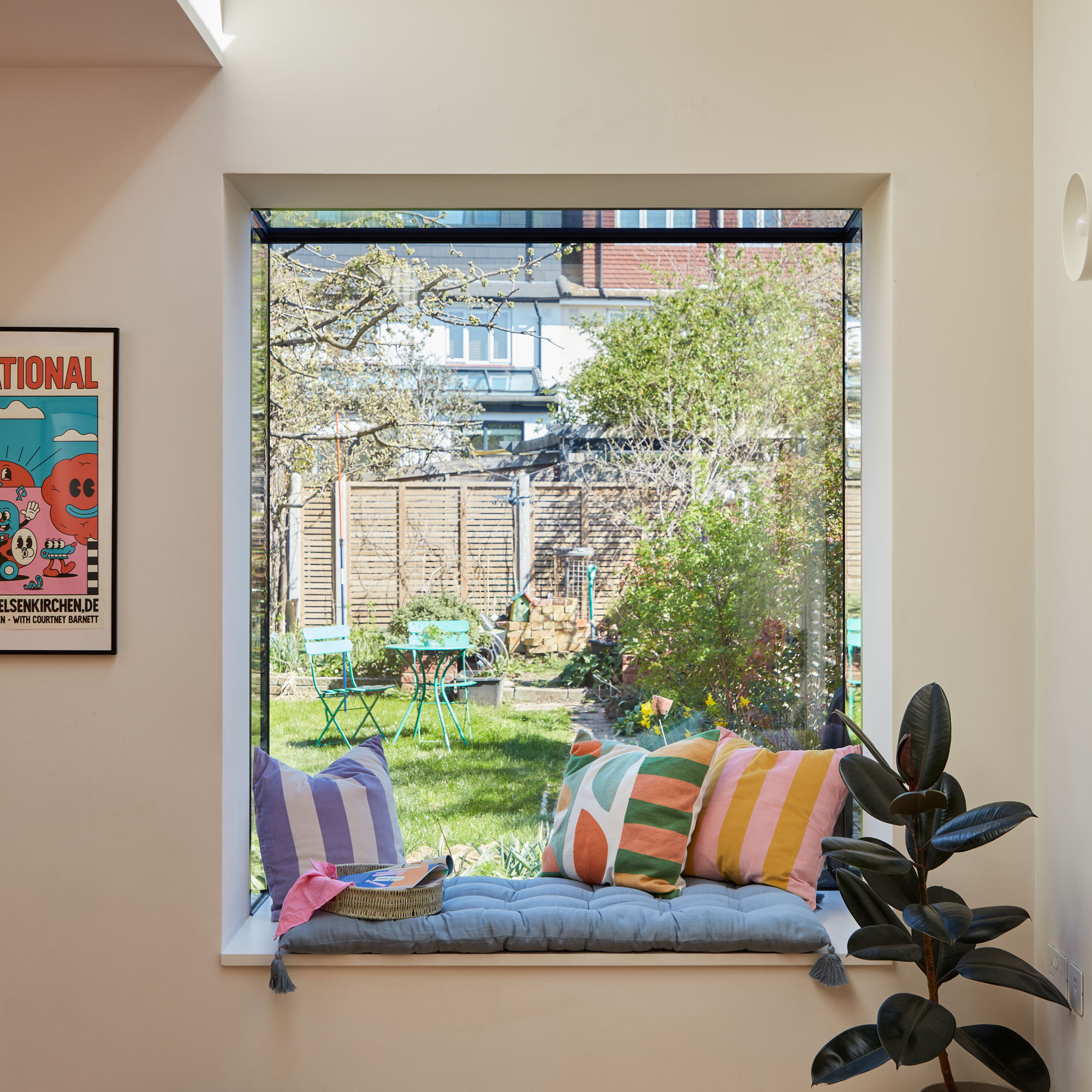
With its thick, hardy leaves, a rubber plant might not be your first plant of choice if you have a small home or if you prefer dainty plants. However, it’s fair to say that this plant is one of the best air-purifying indoor plants you can buy.
‘A rubber plant not only purifies the air but is a well-known humidifier, so it's great for fresh, clean air,' says Steve Chilton, garden expert at LeisureBench. 'These plants are also quite easy to look after, so are a great place to start if you're new to houseplants.'
Of course, it’s always best to check what the humidity level of a room should be if you decide to add humidifying plants to your home.
Where to buy a rubber plant:
- Plants For All Seasons: Let the glossy leaves of this rubber plant take centre stage in your home.
- Waitrose: A smaller rubber plant to get you started.
10. Chrysanthemums
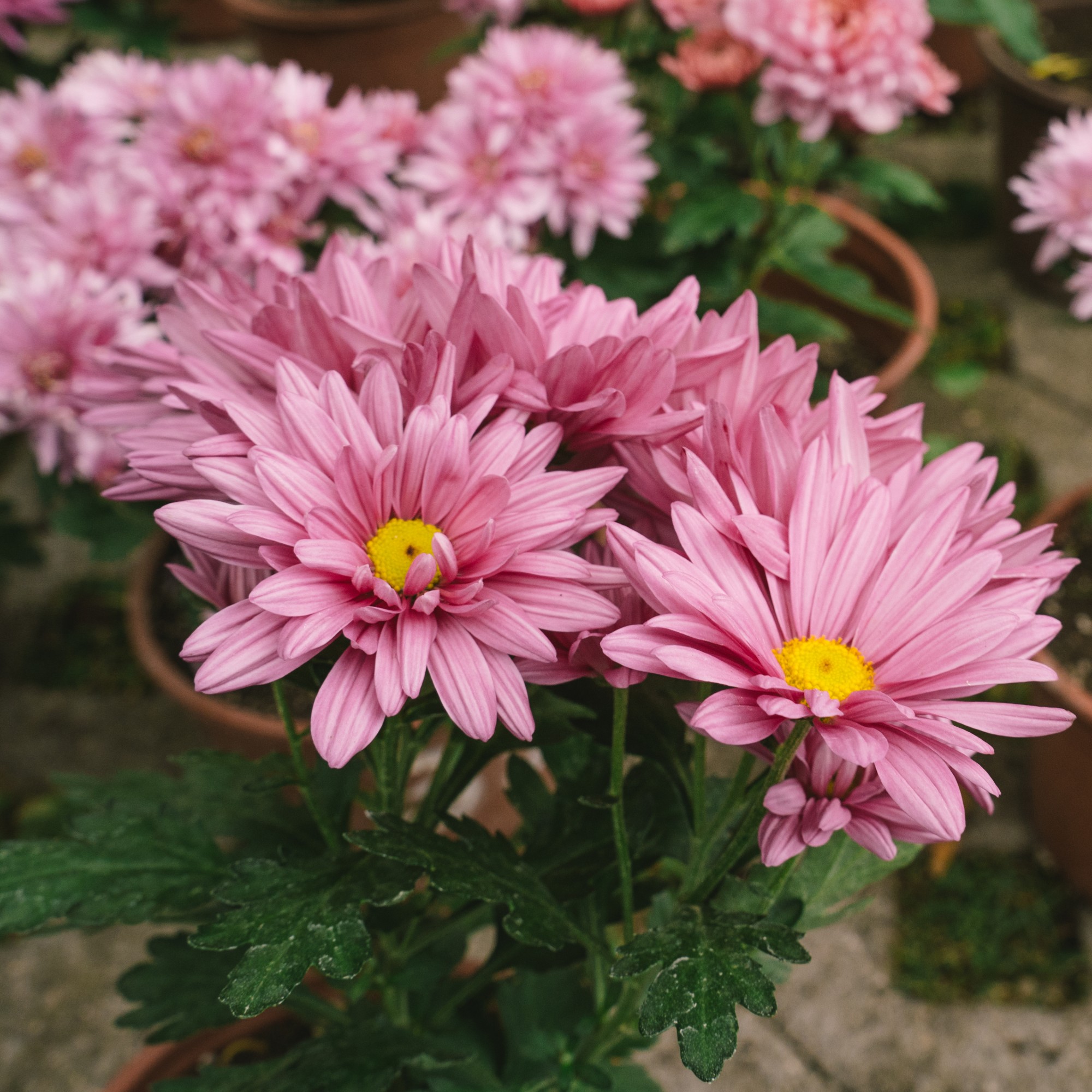
When you think of houseplants, you probably don’t consider chrysanthemums. These big bloomers are usually reserved for the garden or your big floral bouquets — but if you care for them properly, they can make incredible air-purifying indoor plants.
During its Clean Air Study, NASA found that the best overall air-purifying plant for removing benzene, formaldehyde, trichloroethylene, xylene and ammonia is the chrysanthemum.
Interestingly, it’s the flowers of the chrysanthemum (rather than the leaves) that can remove these toxins. This means that you need to take good care of your chrysanthemum plant, and if you find that the flowers start to drop or die, you’ll need to replace the plant, as it will no longer offer air-purifying qualities.
FAQs
Which plant is best for a bedroom for oxygen?
When it comes to the best air-purifying indoor plants for the bedroom, the gerbera daisy is one of the best for producing oxygen.
'This cheerful-looking flowering plant releases oxygen through the night, making it ideal for freshening up a stuffy bedroom and helping you to breathe easy while you sleep,' says Monique from The Joy of Plants.
'Gerberas are also easy to care for, so are suitable for everyone — including novice plant owners.'
Which indoor plant purifies the air the most?
If you’re looking to improve the indoor air quality of your home, opt for plants such as the spider plant, rubber tree, bamboo palm, peace lily, or any of the other air-purifying plants on this list.
All of them will remove harmful toxins from the air and release fresh oxygen, but you might also want to consider aesthetics when choosing these plants, as some plants may better suit your home decor style than others.
So, which air-purifying indoor plant (or five) will you be adding to your home?

Lauren Bradbury has been the Content Editor for the House Manual section since January 2025 but worked with the team as a freelancer for a year and a half before that. She graduated with a Bachelor’s degree in English and Creative Writing from the University of Chichester in 2016. Then, she dipped her toe into the world of content writing, primarily focusing on home content. After years of agency work, she decided to take the plunge and become a full-time freelancer for online publications, including Real Homes and Ideal Home, before taking on this permanent role. Now, she spends her days searching for the best decluttering and cleaning hacks and creating handy how-to guides for homeowners and renters alike, as well as testing vacuums as part of her role as the Ideal Home Certified Expert in Training on Vacuums, having spent over 110 hours testing different vacuum models to date!
- Sophie KingGardens Editor